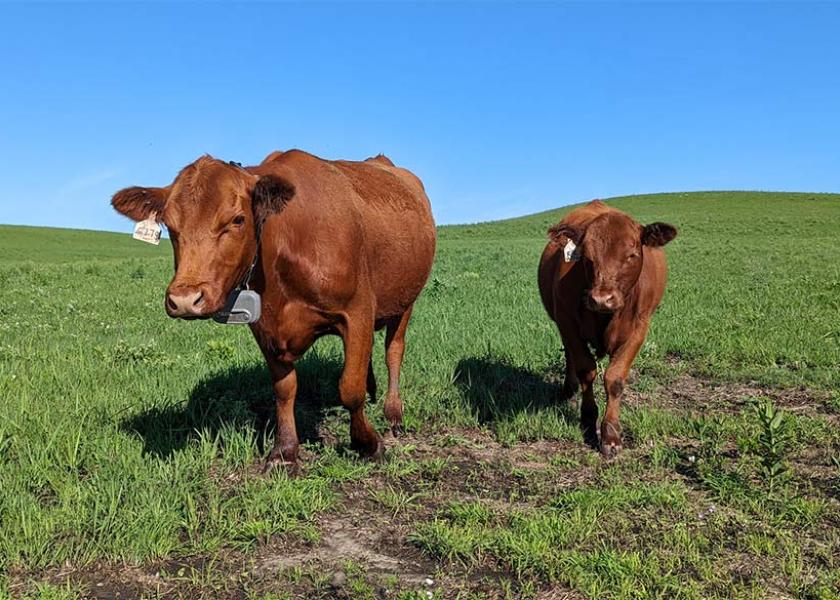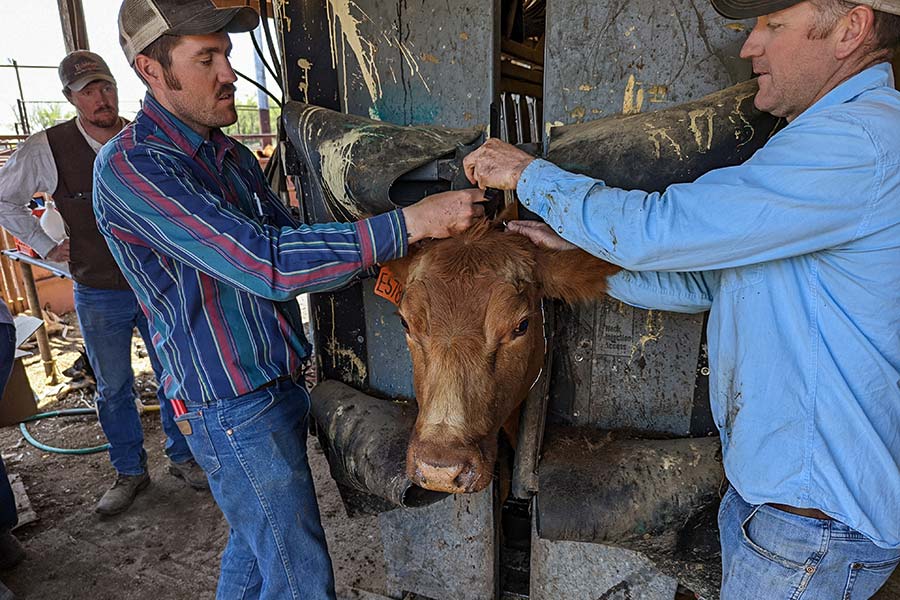Researchers Explore Virtual Fencing As A Regenerative Cattle Grazing Strategy

Virtual fencing is an innovative technology that offers ranchers and managers increased preci¬sion and flexibility in how they graze cattle. Using a combination of GPS and radio signals, land managers can easily create and change virtual pastures in ways not possible with barbed-wire or electric fences.
But can virtual fencing technology help improve environmental and economic outcomes for ranching operations? The Nature Conservancy (TNC) and multiple partners are launching a five-year, multi-state research project to answer that question.
In May 2022, TNC along with public and private partners launched pilot projects at working ranches in Kansas and Colorado. The pilots will determine if virtual fencing can help land managers better implement regenerative management practices that improve soil carbon storage, biodiversity and economic outcomes for beef producers. A New Mexico pilot project is due to start soon.
The collective results gathered from the three research sites will give scientists quantifiable evidence to better understand how virtual fencing can support ranch profitability, as well as global climate change and biodiversity conservation goals.
“At scale, we believe virtual fencing can help land managers better implement management practices that regenerate land health, help address climate change and biodiversity loss, and improve economic outcomes for ranchers,” said William Burnidge, deputy director of the Regenerative Grazing Lands strategy for The Nature Conservancy’s North America Agriculture Program.

Each of the research sites has its own unique set of partners and research goals. In Kansas, for instance, TNC is collaborating with Kansas State University, the National Park Service, Kansas Grazing Lands Coalition and private producers to test the use of virtual fencing at the Tall Grass Prairie National Preserve and the adjoining Mushrush Red Angus ranch. These sites are located in the Flint Hills, the largest expanse of tallgrass prairie left in the world.
“With the management concerns of the tallgrass prairie and the Flint Hills, both ranchers and researchers are looking at how to align the goals of conservation and cattle production,” says Walter Dodds, distinguished professor of biology, Kansas State University, and one of the lead researchers for the Kansas virtual fencing pilot project.

The experiments in Kansas will enable scientists to assess the impacts of virtual fencing on the habitat of grassland-dependent birds, including the greater prairie-chicken and the Henslow sparrow. They will also study effects on riparian zones—the areas bordering bodies of water—and water quality. (Read more about the Kansas pilot project.)
“We are using 21st century technology to solve more than one problem at a time,” says Kansas rancher Daniel Mushrush. “By using these collars on both sides of the property lines, we protect prairie chicken leks and riparian zones, and at the same time, we are grazing more efficiently and intelligently,” he says.







